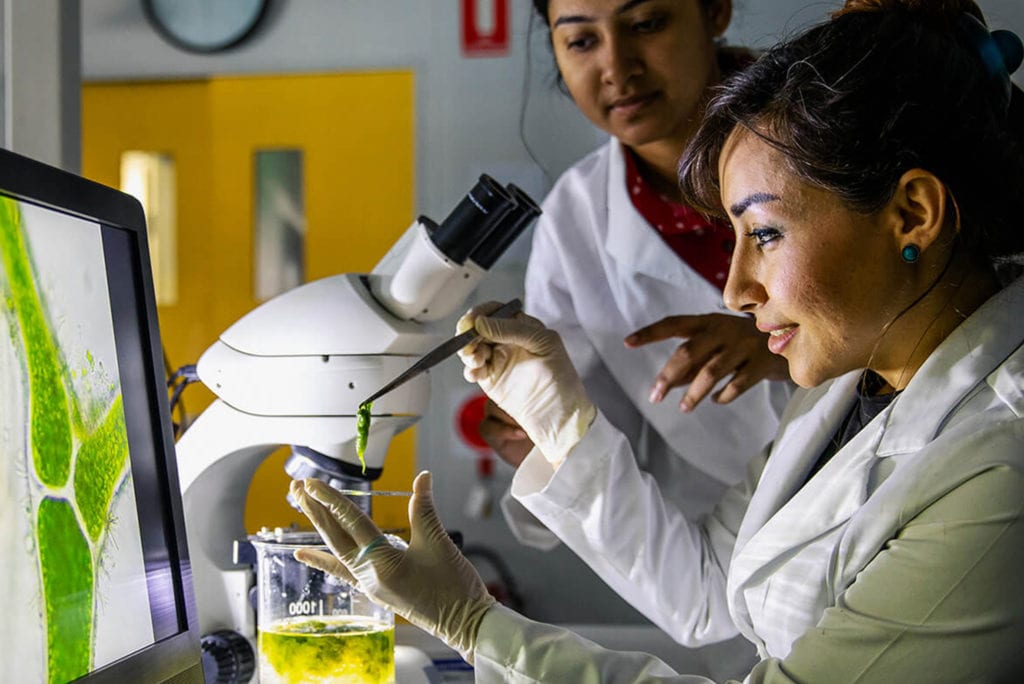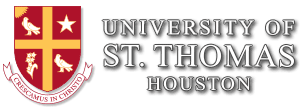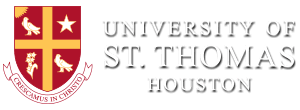Be Bold Blog
The University of St. Thomas (UST) is Houston’s Catholic University, committed to the Catholic intellectual tradition and the dialogue between faith and reason. Our blog is dedicated to helping you explore your future career possibilities and how to make the most of your college experience.
What Is Pre-Med?

What Is Pre-Med? Understanding This Education Track and If It’s Right for You
While it’s true that some students enter college with already declared majors and never change their minds, that doesn’t mean you’re lagging behind if you have yet to decide. One of the best parts of the college experience is the chance to explore new ideas and subjects, which might influence your decision.
However, for students who are considering going to medical school and becoming a doctor, there are a lot of prerequisites that need to be completed throughout your undergraduate studies. That’s why choosing a university that has a comprehensive pre-medical track is ideal to ensure you meet every requirement.
But you may still be wondering, “What is pre-med, exactly?” Read along to find out what to expect in this education track and where it can lead you. You’ll also benefit from some expert insight from Dr. Gabriel Villares, associate professor of Biology and director of the Pre-Health Professions Program at the University of St. Thomas (UST).
What is a pre-med major?
Contrary to popular belief, pre-med isn’t actually a degree in itself. It’s an education track designed to prepare students with all the academic requirements and personal development they need to be a successful medical school candidate. Think of it as a declaration of your intent to pursue a career in medicine or healthcare.
Students can combine any major with the pre-med track to complete all the prerequisites for a standout application. Yes, you really can be a Psychology or Business major and still get into medical school — it happens every year.
If you’re at all interested in applying to medical or dental school, you’d be wise to join the pre-med track as early as possible. At UST, the Health Professions Advisory Committee (HPAC) assigns each student a faculty advisor to help you plan pre-med coursework, prepare medical school applications, secure volunteer, job shadowing, and research opportunities, and more.
What do you learn in a pre-med program?
As a pre-med student, you are expected to excel in classes related to natural sciences, in addition to liberal arts course requirements aimed at developing communication and critical thinking skills. While the exact courses vary from school to school, generally, the required courses for pre-med students include:
- General Chemistry 1 and 2 (with lab)
- Organic Chemistry 1 and 2 (with lab)
- General Physics 1 and 2 (with lab)
- University Physics 1 and 2 (with lab)
- Intro to Biology and Evolution (with lab)
- Intro to Cell and Molecular Biology (with lab)
- Genetics
- Biochemistry
- Statistics
- Literature and Composition
- Psychology
- Sociology
Although grades and coursework are very important components of a medical or dental school application, there are many other components that admissions committees consider when evaluating students. According to the Association of American Medical Colleges (AAMC), the ideal medical school candidate should demonstrate the following 15 competencies before applying:
- Capacity for improvement
- Critical thinking
- Cultural competence
- Ethical responsibility to self and others
- Human behavior
- Living systems
- Oral communication
- Quantitative reasoning
- Reliability and dependability
- Resilience and adaptability
- Scientific inquiry
- Service orientation
- Social skills
- Teamwork
- Written communication
A quality pre-med program will equip students to meet all of these criteria, in addition to compiling all of the important elements of an impressive medical school application.
How does the pre-med track prepare you for medical school?
It’s no secret that getting into medical school is extremely competitive and requires a lot of time, effort, and planning. Your peers will also have completed the prerequisite courses, attained excellent grades, and earned solid MCAT scores.
A well-designed pre-med track will help you find ways to stick out in a sea of high achievers. For a sneak peek at what this entails, check out this year-by-year breakdown of the UST pre-med program.
Freshman year
Upon beginning to program, pre-med students who attend the HPAC Introductory Workshop will be assigned an advisor, who is dedicated to supporting your goals every step of your college journey.
“Because we are a small institution, our students have the chance to get to know their professors really well,” Dr. Villares says. “Every HPAC advisor is a faculty member, so you know they are deeply invested in helping students succeed.”
Whether you’re applying for medical school, dental school, or another professional school, proactive planning will help you get the most of your college experience. Freshmen students are encouraged to:
- Take introductory biology and chemistry classes and labs
- Begin acquiring volunteer experience
- Join clubs and organizations, such as Tri-Beta, ACS, PHPS, and HOSA
Sophomore year
Your HPAC advisor will help connect you with opportunities to gain meaningful experience and exposure to the medical profession. This can be accomplished in a variety of ways, including volunteering, job shadowing, and research in the field or laboratory. Sophomore students are also expected to:
- Take organic chemistry and labs, statistics, psychology, sociology, genetics, and upper-level biology classes and/or chemistry classes (depending on major)
- Begin studying for MCAT or DAT, on your own or with a prep course, in spring and summer
Junior year
This is a critical year where a lot of your hard work will begin paying off. Your advisor will support you in preparing your resume and personal statement, getting your HPAC letters of evaluation, and submitting your applications to medical schools.
“At UST, we go a step further than other schools and create a mock MCAT and DAT exam experience,” Dr. Villares explains. “We simulate the real conditions by having students come into the building, give up their phones, sign in and out of the room, and do a full-length online test.”
Junior students seeking to enter med school will also need to:
- Take biochemistry and physics, plus labs, upper-level biology, and/or chemistry classes (depending on major)
- Attend HPAC workshops dedicated to creating applications, resumes, and personal statements
- Obtain letters of evaluation from HPAC faculty
- Take the MCAT or DAT exam
- Apply to medical or dental school in early summer
Senior year
The final year of a pre-med program is all about finishing up required coursework, practicing for interviews, and preparing yourself to navigate what the future holds in store after graduation.
Another unique feature of the UST program, according to Dr. Villares, is the mock interview day, which is held every December. “Each aspiring med student gets the chance to do three formal interviews with UST alumni physicians who volunteer to give feedback and help prepare the next generation of doctors,” he explains.
What can you do with a pre-med degree?
You may be surprised at how versatile a pre-med degree can be. It’s true that the program is designed to facilitate acceptance into medical school, but the focus on science and lab work also prepares students to be successful in a multitude of careers.
While medical schools are notoriously competitive, professional schools for careers in optometry, pharmacy, veterinary medicine, and podiatry can be also very selective. A pre-med track can help students gain acceptance into these types of programs as well.
For pre-med majors who decide to enter the workforce after graduation, there are a plethora of opportunities in healthcare and the sciences available. Consider the following examples:
- Medical device sales
- Pharmaceutical representative
- Research chemist
- Research scientist
- Wildlife biologist
Is pre-med the right choice for you?
Only you can decide if a pre-med education track is the best fit for your goals, strengths, and interests. You can start by pondering the answers to questions like:
- What do I want out of my college experience?
- What is my motivation to pursue a career in medicine?
- Can I get the college experience I want and complete the required courses, extracurricular activities, and exams for the pre-med track?
- How does becoming a doctor rank in importance against other time-intensive aspirations (i.e., performing in theatre productions, living abroad, training for a marathon, having a family, etc.)?
- Am I prepared to spend the next 10 years studying, training, and completing internships to become a doctor?
Dr. Villares has the following advice for undecided students: “The only way to be sure is to start shadowing. It’s more than just following a doctor or dentist around and observing. You’ll get to ask them questions, interact with staff, see patients, and get valuable perspective from someone doing the job day in and day out.”
Set yourself up for success with the UST Pre-Med track
So what is pre-med? If you have your sights set on medical school, it’s the key to helping you reach your destination. With a student-to-faculty ratio of just 11:1, UST provides the support, guidance, and individual attention you deserve to help you achieve your personal and professional goals.
95 percent of UST pre-med students are accepted into medical school after interviewing — you could be next! Learn more by visiting our Pre-Medical Track page.
Ready to take the next step?
Related articles
About UST
The University of St. Thomas (UST) is Houston’s Catholic University, committed to the religious, ethical and intellectual traditions of Catholic higher education. For more than 70 years, we’ve been graduating students like you into successful careers in medicine, education, business, public administration and more – throughout Houston and across the globe.

